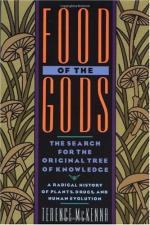|
This section contains 419 words (approx. 2 pages at 400 words per page) |

|
A Brief History of Psychedelics Summary and Analysis
The tropical and subtropical zones in the New World are rich in hallucinogenic plants beyond geographically comparable areas of Southeast Asia and Indonesia. Psilocybin, for example, has a rich history of use in Oaxacan, Mexico for three millennia. Because of the clustering of hallucinogenic drugs in the New World, Western scientists were late to discover them. Explorer-naturalists were among the first to observe activities that included drug use among aboriginal people.
Shamanic rituals appear to utilize pharmacological reactions, often mixing several drugs in order to prolong or intensify effects. Furthermore, some of these psychedelic plants, such as ayahuasca, are regarded as healing elixirs and used to treat or combat diseases such as malaria or intestinal parasites.
Ayahuasca, a hallucinogen derived from a woody climbing vine found in South America, use creates a rich...
(read more from the A Brief History of Psychedelics Summary)
|
This section contains 419 words (approx. 2 pages at 400 words per page) |

|




